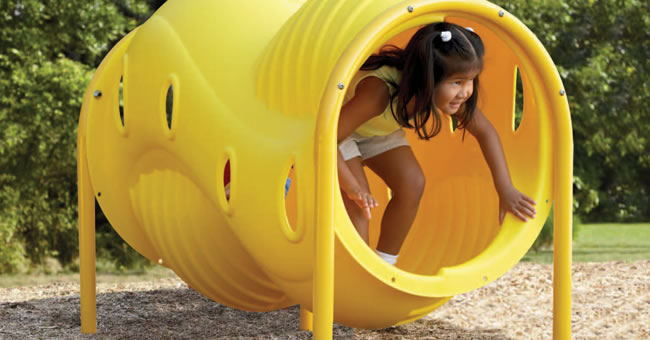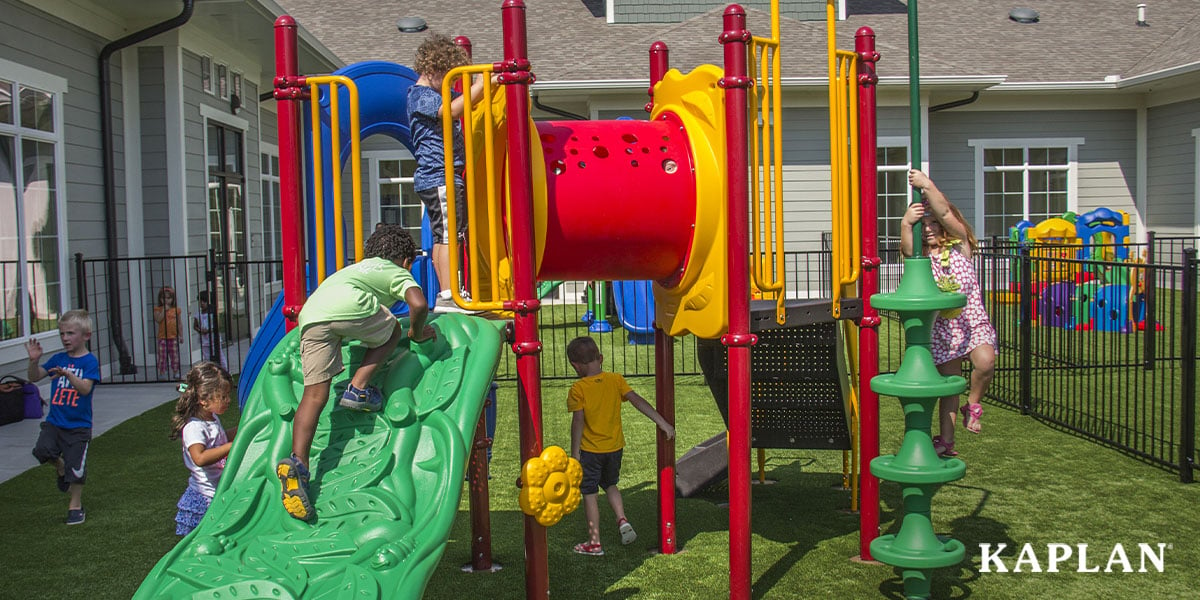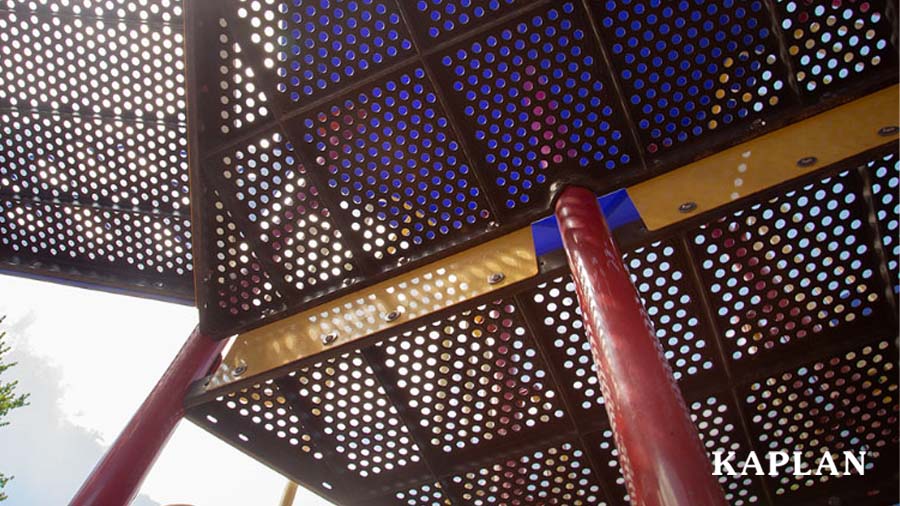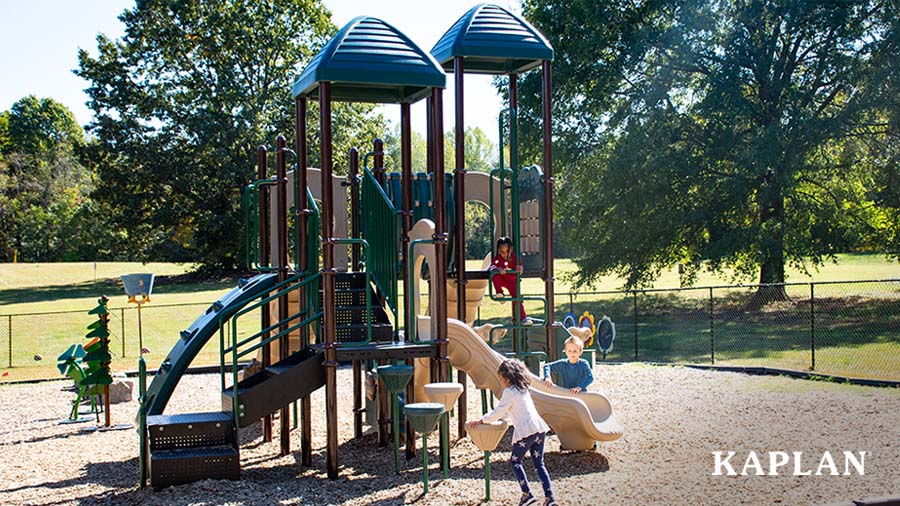
Your playground is where children can explore nature, enhance their physical development, and play cooperatively with friends. However, without properly maintaining your playground equipment and surfaces, these spaces could pose a potential safety risk to young children.
Over the past decade, the Kaplan Playground Sales Development Team has worked diligently to design, deliver, and install playgrounds throughout the United States. Whether that playground is at a local park or an early childhood facility, child safety is our top priority.
To ensure the safety of children on your playground, it is crucial that you conduct routine maintenance inspections of your playground spaces throughout the year. When and how often should you inspect your playground? What should you look for when inspecting your equipment, surfacing, and playground spaces? What happens if you find something in need of repair? This article answers all of these questions and more.
What is the purpose of routine playground maintenance?
Regularly inspecting your playground spaces for maintenance is a great way to keep children safe while playing. When you notice equipment or other broken or damaged materials, you can repair them before any harm comes to a child in your care.
How often should you inspect your playground?
You and your staff should perform Playground maintenance and inspections on a daily, weekly, and monthly basis. Removing broken toys is a task you should perform daily or as often as necessary. Cleaning your equipment and outdoor spaces is something you and your teachers should do on a weekly or bi-weekly basis. An in-depth inspection of your playground equipment and playground surfacing is something you want to perform at least once per month.
The more frequent your maintenance inspections are, the more quickly you can make necessary repairs and updates that improve the safety of your playground spaces.
How do you keep track of your playground maintenance inspections?
To stay consistent with your playground maintenance inspections and ensure you make needed repairs in a timely manner, you want to keep track of every inspection in either a notebook, journal, or digital spreadsheet. Write down a detailed record of your inspection, including the date, any items that need repair, what you did to clean your space, the names of anyone who assisted with the inspection, etc.
The manufacturer of your playground equipment may provide a maintenance checklist that pertains to your installed structures. Review this checklist before completing the following inspection.
What should you look for when inspecting your playground for routine maintenance?
You can perform a playground maintenance inspection at any time, but preferably when the playground is not in use so you can thoroughly assess each area without distraction. As you walk around and inspect your playground spaces, look for the following:
Natural debris cluttering your playground areas.
Natural materials such as sticks, leaves, and debris can quickly clutter outdoor spaces. These materials gather in various areas of your playground, such as the bottom and corners of your fencing. Natural debris will not only hurt children if they fall on it, but it can also attract insects, snakes, and other dangerous and destructive animals.
When you notice natural debris cluttering your playground areas, remove it by placing it in a community biological waste receptacle, an onsite compost bin, or your regular garbage bin.
Playground equipment with broken parts or missing pieces.
Thoroughly inspect every piece of equipment on your playground to check for broken parts, loose bolts, splintering wood, and other signs of deterioration. Don’t be afraid to tug, pull, or push on every equipment component to ensure it is intact and safe.
If you notice loose bolts and fasteners on your equipment or fencing, tighten them before children access your playground. Any equipment that poses a safety risk to children or shows signs of significant deterioration should be roped off or discarded until a suitable replacement option is available.
If you need replacement playground equipment sooner rather than later, read this article to learn about Kaplan’s Quick Ship playground delivery service.
Damaged and weathered playground surfacing.
Your playground surfacing deals with constant exposure to rain, sun, temperature fluctuations, children at play, and more throughout the day. Check your surfacing material for worn areas, cracking, or exposure to the earth beneath the surfacing material.
Keep in mind that loose-fill surfacings, like wood mulch and loose rubber mulch, compress easily over time. If you use loose-fill surfacing on your playground, you may need to fill it in once per year and rake or “fluff” it more often to keep the surfacing depth in compliance with your state’s standards. For solid surfacing such as pour-in-place, bonded rubber, or turf, you want to check frequently for cracks and tripping hazards. Without proper maintenance, these problems can quickly escalate and cause more time and money to repair.
Is your playground surfacing in need of an upgrade? This article will help you choose the best surfacing options to fit your needs.
Damaged and weathered playground borders.
Built using materials such as wood and plastic, playground borders act as a barrier between your outdoor play spaces and other areas of your facility, such as a parking lot, open grassy areas, etc. Replace any wooden borders when you notice visible rotting or splintering of the wood. If you notice your plastic borders are damaged or faulty, it is time to replace them.
Fencing that is not up to code with current state standards.
Fencing is an essential part of creating safe outdoor spaces for children to learn, grow, and play. You want to inspect your fencing and entrance/exit points for any areas that do not comply with your state’s fencing standards. Replace any gates and latches if they do not securely close and lock, keeping children securely contained in designated outdoor play areas. Replace any fencing material if it is falling over, damaged, or weathered.
Dirty or unsanitary equipment.
With constant exposure to the elements and children at play, your playground walkways, equipment, and toys can get dirty – fast! During your routine maintenance inspection, you want to take note of anything on your playground covered in mold, mildew, or dirt. Clean these items per the manufacturer’s recommendations. If you are not sure who the manufacturer of an item is, mild soap, water, a pressure washer, or a sponge should do the trick.
Explore this article for tips to help you disinfect your playground equipment.
What happens when you find an area of your playground that needs repair?
Your playground equipment and surfacing will last for years to come. However, a time will come when repairs and updates are necessary. Should you renovate your playground space or order replacement parts and structures? That all depends on a few different factors, which you can learn more about by reading the article, Playground Renovation vs. Starting From Scratch: Which Is For You?



